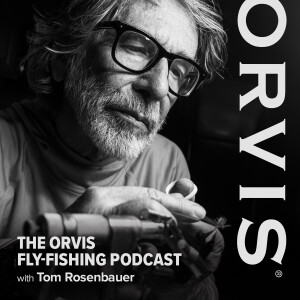
Swing, hit, and miss--why did you not connect with that fish? Did it just miss your fly? Did you strike too soon? Did you strike too late? Or did the fish refuse your fly even though it looked like a take? Dave Jensen and I [@44:47] discuss how you can (maybe) tell why you didn't connect--and it may not always be your fault.
In the Fly Box this week, we have some great questions and tips from listeners, including:
Why does my 7-foot, 4-weight rod make most things more difficult than my 9-foot, 8-weight rod?
Can I use a float tube in a river?
I have trouble getting my indicator or dry fly to flaot when fishing double tungsten nymphs. What can I do?
Is there one fly rod I can use for trout, bass, and panfish?
When fishing with unweighted leeches in a lake, the rainbow trout I catch keep getting off before I land them. What can I do?
What are your expectations when you go winter fishing?
Are traditional featherwing streamers as effective as more "modern" streamers?
How close can I get to stripers breaking on the surface?
Why do the dumbbell eyes on my Clousers keep breaking?
When fishing with an indicator and sight fishing, how can you tell exactly where your fly is drifting?
A great suggestion on labeling fly boxes and using reflective tape to help find lost ones.
How do I tell if old fly lines are still good?
Are cedar blocks a good alternative to mothballs for fly-tying materials?
I need a 10-weight rod for an Alaska trip. Should I get the Clearwater or Recon and will the fly line I use in Alaska be OK for saltwater and pike fishing?
I want one rod and one leader to do everything in my trout fishing. What do you recommend?
More Episodes
 2024-09-16
2024-09-16
Create your
podcast in
minutes
- Full-featured podcast site
- Unlimited storage and bandwidth
- Comprehensive podcast stats
- Distribute to Apple Podcasts, Spotify, and more
- Make money with your podcast
It is Free
- Privacy Policy
- Cookie Policy
- Terms of Use
- Consent Preferences
- Copyright © 2015-2024 Podbean.com




